#usa v mexico
Explore tagged Tumblr posts
Text
Weston McKennie Red Card?

It has been a while since I have made a post on here due to heavy workloads from school but I am watching the USA v Mexico match and the red card toward McKennie felt very unfair. Not sure how everyone else feels but everyone was involved in the fight and most players were getting physical with each other.
For context, Montes received a red for straight ankle contact with Balogun. Many players (Ochoa, Reyna, Pulisic, Alvarez) came to confront the opposing side. Weston and Sanchez got into somewhat of a brawl and Sanchez pulls on McKennies jersey causing it to rip and McKennie shoved him off with a push of the neck. If both parties got a red I could understand that…but just Weston feels a bit of an error on the ref's part. I can totally see why he got the card but to not give it to all parties involved is where I find the issue.
What do you guys think about this situation?
With so many fights within this match a review is definitely to come!
#usa v mexico#usavmexico#kickthepitch#usmnt#mexico national team#concacaf#nations league#christian pulisic#gio reyna#jorge sanchez#memo ochoa#weston mckennie#futból#usa soccer#soccer#mexico soccer#César montes#el classico
17 notes
·
View notes
Text
the usa v mexico game was A MESS
11 notes
·
View notes
Text

This sums up the entire game
8 notes
·
View notes
Text
240112 Volume Up in USA Fancam of Kim Lip performing Tyla - "Water" at OEC's New York concert
Source: gyujjz
#loona#artms#odd eye circle#loona oec#kim lip#video#v: concert#v: fantaken#v: fancam#v: cover#240112#volume up in usa/mexico
55 notes
·
View notes
Text
This USA v Uruguay game is not soccer…it’s how many players can be literally taken out of the field injured
#USA v Uruguay#copa américa 2024#copa america#this game is as stressful as the Ecuador v Mexico game last night
5 notes
·
View notes
Text
NEVER BEEN PROUDER TO BE A MEXICAN💪💪,LOST MY VOICE CAUSE I SCREAMED SO MUCH AT USA V MEXICO AND MEXICO V PARAGUAY


THE WOMENS TEAM CANT BE IGNORED ANYMORE FUCKERS, HAHAHHAHA
#i have video of the 2nd usa v mex goal#and its pure beauty#mexico nt#mexico#womens football#womens soccer#gold cup#soccer
2 notes
·
View notes
Text
Even i was hoping trump was just going to be only slightly worse than biden but then lo and behold! Out of fucking nowhere, they want to persecute and put every "illegal" in CONCENTRATION CAMPS. And they want to invade mexico. They're still persecuting trans people via legislation. They still had that fucking batshit crazy plan to DISMANTLE the entire democratic process.
So remember that even when your Democrat is basically satan himself, Republicans still figure out how to be satan times 10. Always. They're always going to be worse.
On another, sadder note, i think satan times 10 will win. Because progressives have broadly given up on this new, increasingly shitty status quo, theyll let in something significantly worse. Its not that i even necessarily blame voters when the Democrats themselves make themselves irredeemable, but itd be nice to just hope... that things couldnt get significantly worse.
#and i don't think 2016 is comparable to this election either#just so we dont forget trump did also put many many immigrants in concentration camps during his time#but he also planted the people necessary to revoke roe v wade and other rights of minorities#the amount of anti trans bills are already staggering but at least some of them are losing#another thing i find so worrying is that people also seem to forget trump did jan 6th like... a insurrection he tried to get the VP killed#for not allowing him to become a dictator and overriding the vote#if he failed once why would you let him try it again and with a SIGNIFICANTLY larger amount of support for it#what frightens me is that America isnt like Germany was#its THE global military and cultural power. it has the power#just like israel is being allowed to slaughter with no repercussions America will be allowed to do what it will with barely a word from#other global powers because why would they step in? its the USA.#theyd terrorize Mexico and other third world nations first; thats certainly not a priority for the rest of the powers that be#politics
2 notes
·
View notes
Text

Hey guys, if you haven't checked out my last future spouse tarot reading, it was about how they look. You can find it here.🤗
Pile One

Hi, pile one for your future spouse's personality. I do see them as a very caring and compassionate person. I see them as a risk-taker and an adventurous person. They are also very ambitious, and they will go after what they want. I see them being hard workers. I will say it because they are ambitious. I see one flaw that they do have is that they may be a little bit of a manipulator in their career. I see they may try and use others to gain an advantage or use others for their own gain. I don't think they do that with ill intent, because I see them as nurturing and compassionate. I see they don't play about their career either. They aren't heartless; they do care, but their career and their goals matter to them greatly. It could be that they use the people that used them or use others that aren't the best people. They could think of it as repaying the favor in a way. I can also see them being a little petty, but again, they do care; they are very nurturing individuals, and they have soft spots. They are kind people, and I see them giving back to the community and to people in need. Your future spouse is a very balanced individual.
Extra: 1, 10, 22, 222, 1212 Cancer, Aries, Sagittarius, Pisces, March, E, Z, I, V, J, Hardworking, Career, Canada, Asia, birthmark, pursuit, chasing dreams, Overseas, seahorses, traveling, going abroad, sightseeing, hotels, Big Ben, bus, plane, countryside, big city, children, wanting a family.
Pile Two

Hello pile two! I see that for your future spouse, I see them being an introvert; they may like to spend more time at home than going to parties. I see them being really spiritual and very smart. I see them being very wise, and they give some really great advice. They are really good listeners. I do see that they may have some emotional scars, and I see they have been through something that really hurt them, but I also see that they pushed through. I feel they are very quiet and shy, and above all, they have a safe and calm aura and energy about them. I see them as healers and creative people. I see they take their self-care very seriously. I see they like to spend time alone doing their meditation and hobbies. I see if they are working on something, they will give it their all and put 100% into it. I don't see them being the type of person to half-ass anything.
Extra: 444, Virgo, short, blue eyes, cleansing, love, journal, writing, painting, artwork, novel, reading, solo time, bookworm, swans, body of water, ponds, wish, (pink) flowers, November, Shadowhunters.
Pile Three

Hey, pile three. I see that your future spouse is very loyal and dependable. If you need them, they are there; no questions asked. If you need help with something, they will help you out as much as they can. For example, if you need money, they will give you the money; if you need a ride, they will drive you. No matter how big or small the task is. Whatever you need, they will help you out. I can see them being very wise people. I do see that they move very fast and can possibly love bomb, but I just think they want to do these nice things because they are really generous, so communicate and talk to them if you feel uncomfortable. I think they move fast without even realizing that they are doing it. I see they really like to experience new things, and they might be bold. I see them liking to dance and try new things.
Extra: 12, 15, 20, 29, H, fire signs, Capricorn, Leo, elegant, classy, funny, smart, USA, South America, Mexico, October, muscular, moving, shake it up, purple, brown hair, straight hair.
I offer tarot readings here like soulmate readings, love readings, career readings, and pendulum readings.
#daily tarot#free tarot#pick a card#pick a picture#pick a pile#tarot pac#tarot pick a card#tarot reading#tarotcommunity#tarot#future spouse
203 notes
·
View notes
Text

Drepanosaurs were a weird little group of tree-climbing Triassic reptiles with prehensile claw-tipped tails, chameleon-like bodies, humped backs, grasping feet, long necks, and somewhat bird-like skulls that may have been tipped with toothless beaks in some species.
Recently some of them have been recognized as also having adaptations for digging and ripping into insect nests, similar to modern anteaters, with highly specialized forelimb bones and a massively enlarged hoked claw on each hand.
And now we have another one of these digging drepanosaurs: Unguinychus onyx, whose name delightfully translates to "claw claw claw"!
Living in what is now New Mexico, USA during the late Triassic, around 215-208 million years ago, Unguinychus is only known from its enlarged hand claws but was probably similar in size to some of its close relatives, likely around 40cm long (~1'4").
Based on skin impressions from the early drepanosaur Kyrgyzsaurus it also would have been covered in small scales, possibly with a skin crest and a chameleon-like throat sac.
Drepanosaurs' evolutionary relationships are rather unclear, with various studies classifying them as an early branch of diapsid reptiles, as close relatives of the gliding kuehneosaurids, or as protorosaurian archosauromorphs. But recently another idea has been proposed, instead placing them slightly further up the archosauromorph evolutionary tree in the allokotosaur lineage close to trilophosaurids – and notably making them very closely related to fellow Triassic bird-headed weirdo Teraterpeton.
———
NixIllustration.com | Tumblr | Patreon
References:
Alifanov, V. R., and E. N. Kurochkin. "Kyrgyzsaurus bukhanchenkoi gen. et sp. nov., a new reptile from the Triassic of southwestern Kyrgyzstan." Paleontological Journal 45 (2011): 639-647. https://www.researchgate.net/publication/257843064_Kyrgyzsaurus_bukhanchenkoi_gen_et_sp_nov_a_New_Reptile_from_the_Triassic_of_Southwestern_Kyrgyzstan
Buffa, Valentin, et al. "‘Birds’ of two feathers: Avicranium renestoi and the paraphyly of bird-headed reptiles (Diapsida:‘Avicephala’)." Zoological Journal of the Linnean Society (2024): zlae050. https://doi.org/10.1093/zoolinnean/zlae050
Jenkins, Xavier A., et al. "Using manual ungual morphology to predict substrate use in the Drepanosauromorpha and the description of a new species." Journal of Vertebrate Paleontology 40.5 (2020): e1810058. https://www.researchgate.net/publication/344545876_Using_Manual_Ungual_Morphology_to_Predict_Substrate_Use_in_the_Drepanosauromorpha_and_the_Description_of_a_New_Species
Pugh, Isaac, et al. "A new drepanosauromorph (Diapsida) from East–Central New Mexico and diversity of drepanosaur morphology and ecology at the Upper Triassic Homestead Site at Garita Creek (Triassic: mid-Norian)." Journal of Vertebrate Paleontology (2024): e2363202. https://doi.org/10.1080/02724634.2024.2363202
#science illustration#paleontology#paleoart#palaeoblr#unguinychus#clawclawclaw#drepanosauridae#drepanosauromorpha#drepanosaur#allokotosauria#maybe#archosauromorpha#reptile#art#triassic weirdos#THE CLAAAWWW
263 notes
·
View notes
Text
USA PATCH NOTES
-made Wisconsin significantly larger by absorbing several other states into it, as well as giving it most of Michigan
-minnesota is now an independent country
-made missouri much smaller (much of what used to be missouri now belongs to wisconsin)
-resolved v-fighting between utah and wyoming
-split the rest of Michigan between ohio and indiana
-the entire delmarva peninsula is now part of Washington, D.C.
-gave georgia's coastline to south carolina
-further divided the dakotas
-southern montana is now part of southwest dakota
-the alaskan panhandle is now canadian
-3 of the hawaiian islands are now part of mexico
-merged arizona, nevada, and southern california into a single state
-alabama and mississippi's coastlines are now floridian
-oklahoma is now very very long
-eastern texas is now in louisiana
-arkansas is slightly larger
-western texas is part of new mexico
-merged northern california, western oregon, and the entirety of washington into a new state
-eastern oregan is part of idaho
-the idaho panhandle is now a separate state
-rotated the border between virginia and north carolina by 90° (virginia in the east, NC in the west)
-merged kentucky, east tennessee, and the maryland panhandle into west virginia
-merged the rest of maryland as well as most of western new york into Pennsylvania
-merged eastern Massachusetts and all of new hampshire into maine
-merged western massachusetts, new york city, long island, and all of new jersey into vermont
-renamed colorado to squareland
-rhode island is entirely unchanged

#america#patch notes#geography#if someone wants to redo this with cleaner lines then by all means go for it
120 notes
·
View notes
Text

Global women’s seven-a-side football series launched with $100m investment
‘This is going to be a world-class event for these players’
First eight-team event set to take place in Lisbon in May
A lucrative new seven-a-side global women’s football series has been announced with the first event set to take place in Portugal from 21-23 May. The new competition has been named the ‘World Sevens Football’ and it is understood there is a commitment to invest $100m (£77m) in the series over a five-year period.
The new series of invitational “grand slam” tournaments, first reported by the Guardian, will feature $5m prize money per event. It is funded by investment from the US-based philanthropist Jennifer Mackesy, co-owner of the NWSL club Gotham FC, and will be broadcast live by the streaming platform DAZN.
The teams involved in the first eight-team competition have not been confirmed, but a different set of clubs will compete in the second event in November-December, which will be staged on a different continent. The winning team at each event will receive $2.5m.

The organisers say players will be “at the heart” of the series and they have been guided by a player advisory council, which is led by the former USWNT winger Tobin Heath and also includes the former Sweden captain Caroline Seger, the former England and Team GB defender Anita Asante, the ex-USA right-back Kelley O’Hara, and the former France defender Laura Georges, who previously spent more than seven years as the secretary general of the French football federation.
‘World Sevens Football’ has named the former US women’s international and Bay FC co-founder Aly Wagner as chief of strategy, and she told the Guardian: “This is one of those really pivotal moments in women’s football, and an opportunity for us to do something unique and different. This is a global series that will travel the world and one of the keys to this is really opening the market and growing the market of women’s football in those places.
“The seven-v-seven format is one the players love, it’s one of their favourite things to do in training, the small-sided games and it’s one that I think fans will end up clamouring for. It’s so intense, action-packed and it’s all the stuff that players love, one-v-one duels, shots, goals.
“This is going to be a world-class event for these players, they’re going to be treated the way we always dreamed of being treated as players, from the moment they step off the plane.”
The inaugural tournament will be staged from 21-23 May in Estoril, Portugal, on a grass pitch at Estádio António Coimbra da Mota, where it is understood a ‘stadium within a stadium’ will be built around a half-sized pitch for the seven-a-side games. That is directly in the run-up to this year’s Women’s Champions League final, being staged nearby in Lisbon, so the two finalists will not be involved in the first event.
The venues for future events have not been announced but the organisers say they are planning to go to cities “across the United States, Mexico, Asia, Europe, and beyond”. The group have been in dialogue with Fifa and Uefa but do not expect to need any governing body’s permission to run the series, because seven-a-side is not a codified form of the game.
41 notes
·
View notes
Text
2 PULISIC GOALS RN
3 notes
·
View notes
Text
I've been trying to learn the world flags so I can identify them (for funsies) and I'm going by continent, starting with America because I am here 🇸🇻 💙
(Putting this under a readmore because longish post about thing that's probably not v interesting so I dont wanna be too annoying BUT. I wanna talk abt it a little anywayz sooo)
It's been SOOO fun, it's really exciting to see a random flag somewhere and to know whose flag it is : -D I passed by a travel agency poster thing with a bunch of South American and Caribbean flags and ahcdbjncd it feels so nice to know things
(only thing is that I've been pronouncing every country name in spanish, which would be correct for most of South America but like. not All of it, I'm sorry Suriname I didnt know the E is silent.. also 4 the Caribbean islands srry 4 pronouncing it Hamáica and Ay-tee(Haití) sobS)
I've been ignoring the USA and Canada flags completely, so a funny side effect of tht is I've been grouping up flags in categories where those 2 would fit, but I only notice a while after hbjnHBN
I was thinking "Out of the America flags, I can only think of 2 that are a vertical tricolor flag with white on the middle and red in one (or 2) of the sides.. Mexico 🇲🇽 and Perú 🇵🇪 😁" .. I forgor canada exists
And I was thinking "Oh there's SO many flags with the france colors here, there's Costa Rica 🇨🇷, Panamá 🇵🇦, República Dominicana 🇩🇴, Chile 🇨🇱, Cuba 🇨🇺, Puerto Rico 🇵🇷, Paraguay 🇵🇾, and Belice 🇧🇿 technically 😁, so many stars too" .. I forgor abt USA
Thinking also of the few flags that are a tricolor flag with white on the middle and blue on the sides,, El Salvador 🇸🇻 mi amor mi cielo mi vida she's in there with Guatemala 🇬🇹, Honduras 🇭🇳, Nicaragua 🇳🇮 and Argentina 🇦🇷
I'm excited to learn the rest of the flags of the other continents and see which ones I like the most, atm my favorites are El Salvador 🇸🇻(which will never change because I'm VERY biased) Bahamas 🇧🇸 and Trinidad and Tobago 🇹🇹, they look SO nice.. I'm excited to get to Africa, Botswana's flag 🇧🇼 looks super nice too.
(Hope the emojis aren't annoying, I included them so you don't have to google them)
Anytime I start even Thinking about flags, I inevitably spend at least an hour looking at them and I open a Million wikipedia and googleimages tabs about it.. I think it's been like 2 hours since I started typing this because I kept getting distracted with that.
I love any chance I get to talk about flags : -]
#personal#learning is SO hard; maybe tht's why I'm so proud of this.. I think it's been fun and not torture to learn these bc it's pictures#I just need to put the right image and the right name together#and learning things visually might be easier to do? idk. it's been a while since I've learnt something successfully; so Im rly happy
42 notes
·
View notes
Text
240114 Volume Up in USA Fancam of Kim Lip performing Tyla - "Water" in Orlando
Source: ghostzeros
#ft. short hair this time!#loona#artms#odd eye circle#loona oec#kim lip#video#v: fancam#v: fantaken#v: concert#v: cover#volume up in usa/mexico#240114
22 notes
·
View notes
Text
Alex V. “Ajax” Johnson moodboard + random headcannons

-his middle name is Vance
-from southwest USA area (Arizona/New Mexico/Nevada/Texas)
-middle child, had two sisters that he loved so so dearly (“my girls” is how he’d refer to them. everyone that really knew him knew about his girls back at home)
-had the best sense of humor amongst the Ghosts, next to Kick and Rorke (and Merrick, believe it or not)
-epitome of stubborn, absolutely didn’t give a fuck (view: him flipping the Feds off while being tortured). was both a gift and a curse for him
-knew Keegan since they were teens (canon bc of Sand Viper, but I like to think they go back a little further than that)
-blues/punk/rock/industrial/hip hop/classical/alternative listener. 70s music lover
-first in his family to join the military. his mother nearly had a heart attack
-favorite Ghost aside from Keegan was Rorke, big mentor for him. made the betrayal sting even more, watching the man abandon the values he helped instill in him
-had the gene that makes cilantro taste like soap
-Sand Viper felt like a fever dream to him, and it took a while to even remotely calm his nervous system down. he had nightmares for a while, like most of them did, and would sleep near Keegan whenever possible
-^he considered it what made him a man rather than a boy
-used to prank Rorke and Elias on base with the other guys. if anyone got caught, it was usually him (you could always hear him snickering off in the background somewhere)
-was pretty close with Torch before he went missing
-being the youngest/least experienced member during the Legends Never Die mission was daunting to him. Keegan, although only by a year, was always the youngest, so he felt a ton of pressure for that reason
-mediocre dancer, except for classic ballroom type dances actually. grew up watching his parents do the foxtrot and waltz, so his tango skills were swoon worthy
-^which was a weapon because he’s also very very charming. flirted in an either lighthearted and jokey way or an absolutely bewitching and alluring way. typa guy to quite literally charm his way into your pants
-very ironically used to dress up as a ghost for Halloween when he was a kid a lot. he wondered if maybe he was always destined to be one, either as a part of the task force or his inevitable demise
-had a wide and pretty smile, naturally straight teeth that lit his face up when he grinned (like I imagine Hesh would have too)
-looked the best of all the Ghosts with the standard military issue buzz cut. could pull off any hairstyle he was given (cus he was handsome lmfao, that’s it)
-did band in middle school. his sisters teased him for being a flute player instead of doing sports but bless his heart he was good at it!
-was a littleeee bit of a nerd. Could bond with Kick over techy stuff sometimes
-would dream about the sunsets from his hometown when shit got particularly rough, especially during his early marine days. the desert skies brought him peace
#I need him to exist so bad#this is kinda how I see him#rip Ajax you would’ve loved Hesh and Logan#call of duty ghosts#cod ghosts#alex ajax johnson#ajax call of duty#ajax cod#alex v johnson aka ajax#ajax johnson#gabriel rorke#keegan russ#thomas merrick#elias walker#call of duty kick#chris ‘torch’ greene#gunnrblze rambles
50 notes
·
View notes
Text
Ok, I wanna post at least today, SO!
As a little bonus, imma post the pics found in the kid's introduction sheets and some more infos based on them!
Penny!
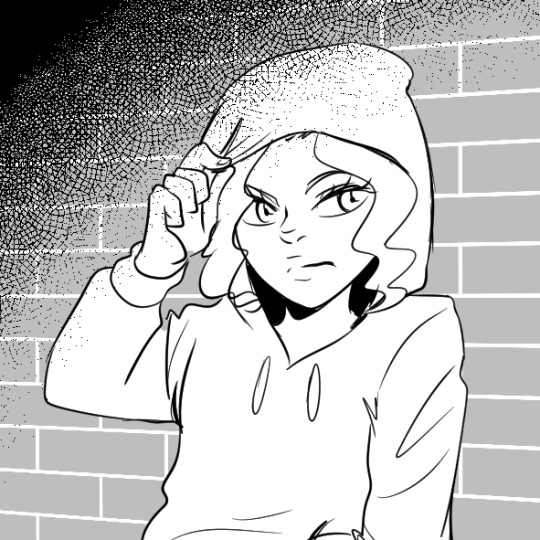

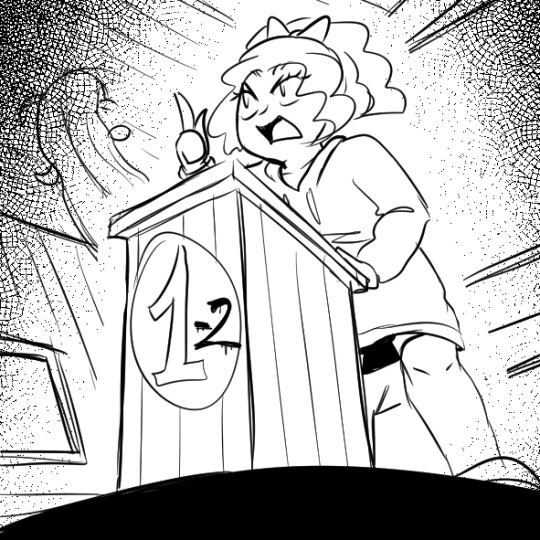
🩷She doesn't like to be noticed or looked at. She does her best to avoid people's eyes on her. Also hates big crowds.
🩷She loves to go to the aquarium where live mermaids shows are held! She knows all the mermaids' names and they also recognize her when she arrives! She's a friend!
🩷She's not good at giving speeches, sometimes Simon has to step up and sum up stuff. She's grateful for that because she doesn't know how to end them!
-
Simon!
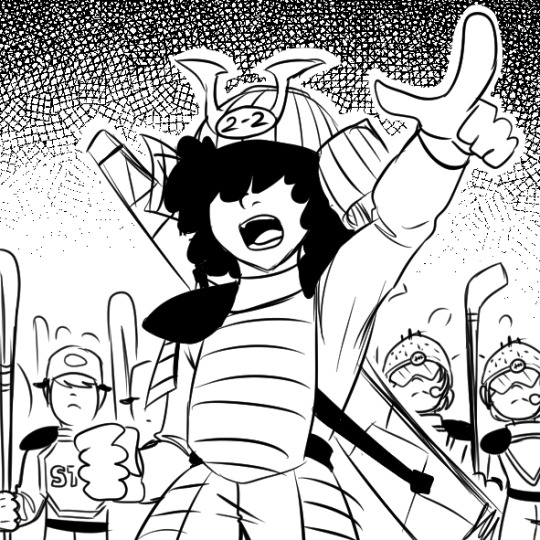


❤️Everyone at moonbase was sad when he announced he would step down from Soopreme Leader and become a normal KND operative. He did that after assigning Sector V to Penny and the others! He's regarded as a calm but fierce leader, always in first line with the others, always with a solution.
❤️He likes to chill. Even when he was Leader, he pretended everyone had a "nap time" from 2pm to 4pm. Not everyone joined this practice, but those who did, found they had much more energy for the rest of the day!
❤️He's one of the bestest at origami folding! He can create everything from paper, he created a robot and a vehicle! But his masterpiece is the giant fan he fights with. It's indestructible!
-
Cinzia!


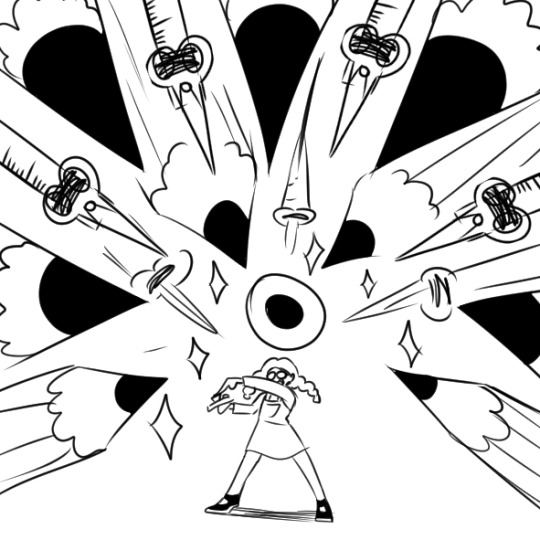
💜She likes to build stuff! If you ask her to come up with new stuff, she will stare at you and your soul until you tell her to just build what you want.
💜She HATES bugs! No matter the size or how they move, they're ALL UGLY AND NEED TO DIE IN A FIRE! She tried to burn the whole Sector V treehouse because she kept finding bugs in her room. Now, who wants to explain her bugs live in trees...?
💜Even if the ideas are not hers, it doesn't mean she cann't make them a little bit... more interesting! And bigger! Bigger is better!
-
Joey!



🩵Best dodge ball player in the world. Remember that dodge ball temple? People are required to go on a pilgrimage to visit his house and pay him their homages. His parents are so happy he has so many friends!
🩵He loves dolls and loves to play with them. Tea time is his favorite! He not only collects Rainbow Monkeys, but also some human-like dolls and other animals, too! They're just too cute!
🩵He could draw from morning to evening. Sometimes he gets caught drawing during class, and his parents got called many times because of this. But he still gets good grades so... where's the problem?
-
Robbie!


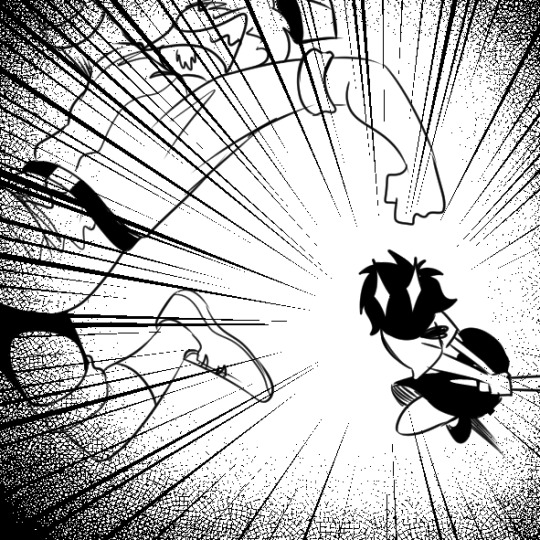
🧡There's a reason she likes wearing orange: her personal hero is Numbuh 4 himself, and she wants to become his successor. Everyone says she's gonna get there and even SURPASS him! Wally likes her!
🧡She speaks English, Spanish and Italian. Her two moms are from Mexico and Italy, and moved together in the USA before she was born. She can swear perfectly in 3 languages. Italian is her favourite for that, tho.
🧡Never. Ever. EVER. Look at her. In her eyes. She doesn't like eye contact. Eye contact means you have a death wish. And she's gonna be your personal reaper.
#teen au#knd#kids next door#sector v 2.0#knd oc#penelope doe#simon lincoln#cinzia green#joey beetles#roberta trejo lazzaini jr
55 notes
·
View notes